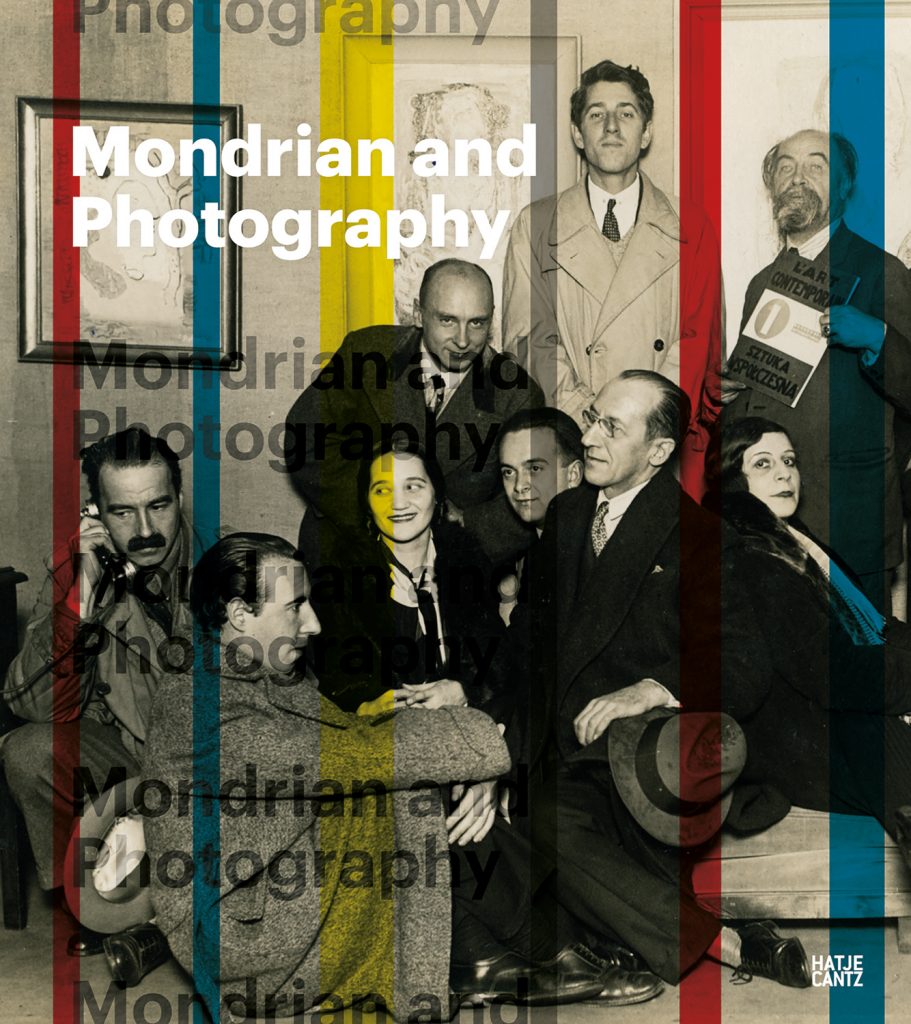
Hrsg. Wietse Coppes, Leo Jansen, text by Chris Stolwijk
English
2023. 368 pages, 400 illustrations.
Hardcover
24,00 x 27,00 cm
€ 58,00
ISBN 978-3-7757-5400-2
https://www.hatjecantz.de/mondrian-and-photography-8381-0.html
“The prevailing image of Piet Mondrian is a cliché” is how „Mondrian and Photography“ begins. After Fondation Beyeler (Riehen, Switzerland) and the North Rhine-Westphalia art collection successfully worked with „Mondrian Evolution“ to break through the Mondrian cliché by showing Mondrian’s path from landscape painter to abstract artist, the RKD, the Dutch Institute for Art History, is now helping to contribute to the dismantling of stereotypes in this volume on Mondrian photography, published by Hatje Cantz. Whereby: One enters Mondrian and shopping on Google and one is flooded with vases, cushions, bags, fleece blankets, shirts more or less influenced by Mondrian’s abstract geometric images.
The book was edited by Wietse Coppes and Leo Jansen, the foreword was written by Chris Stolwijk, Director General of the RKD. Mondrian, we learn, benefited from the rapid technical development of photography and recognized its potential to make his work and thus himself better known. Most of the photographs of Mondrian and his work collected in the book were taken by professional photographers, some of them famous: André Kertész, László Moholy-Nagy, Lisette Model. Hannah Höch and Kurt Schwitters also photographed him.
The first photograph of Mondrian is from 1889, posing as a young adolescent with his siblings to an unknown photographer in a photo studio, a common motif of the time, particularly among a middle-class family. With the development of portable cameras, the photographs that show the young artist are increasingly turning into snapshots, casually taken outside of photo studios. The „democratization of photography“, as the book calls it, is gaining ground, everyone can now become a photographer. Such pictures are then subtitled something like this: “Piet Mondrian with Frits Bodenheim on his shoulders and Simon Maris kneeling at the dock in IJmuiden, 18 August 1903 Photograph: Mies van de Water or Louise Bodenheim“. At that time, it was obvious that photography would come into the focus of artists. Edgar Degas, for example, was an “early adopter”, as the book writes. However, Mondrian himself was hardly active as a photographer. And the use of photographs as templates was also rare. One of the major exceptions was that he used a photograph for a self-portrait in 1908: „he did not feel that the medium was capable of penetrating more deeply into reality, which for him was the essence of his art,“ writes Chris Stolwijk.
Finally, in the 1920s, Mondrian hired photographers to photograph his studio, and these photographs were printed in various newspapers and magazines. The artist skilfully uses the expanding print media for his self-marketing, thereby bringing him into the public eye. Meanwhile, a bitter debate was taking place in the art world as to whether or not photography was evolving into another art form. Moholy-Nagy was one of those artists who had the vision of developing photography into its own art form. Mondrian’s attitude remained ambivalent in the debate, after all he believes photography is capable of developing into a genuine art form in the future: „But it is difficult at present to predict the evolution of photography – indeed, so much effort has already been made in the field of pure plasticity that we might expect anything from photography.”
One of the book’s most revealing chapters is „Portraits: Searching for the Right Look.“ The authors analyze some photographic portraits showing Mondrian – and their impact, function and relation to two self-portraits Mondrian painted in 1908 and 1918. The book then contains extensively illustrated essays about the studio photographs, the group portraits and the photographic reproductions of his pictures. Finally, in the picture section, the photographs are divided into chapters chronologically according to where Mondrian was active: the Dutch period (1872-1919), the years in Paris (1919-1938), the time in London and New York (1938-1944) and finally the posthumous photographs. Exciting images can be discovered, for example Alfred Roth’s exterior shots of the studio complex of Mondrian’s Parisian studio. Be it Moholy-Nagy’s shots from the windows of Mondrian’s Parisian studio and his kitchen. Or George Platt Lyne’s group shots of exile artists in America, Lisette Model’s shots of exhibition openings with Mondrian’s paintings, or Arnold Newman’s portraits; finally Fritz Glarner’s and Harry Holtzman’s photos from Mondrian’s studio, a few days after his death. Holtzman’s images are the first color photographs in the book.
The last 50 or so pages of the book are devoted to the cataloging of all photographs, including an impressively carefully researched description of the photographs („Mondrian’s studio after his death; view of the east wall, with his palette table in front of the fireplace, alongside a shelf-unit with painting materials, between 2 February and 21 March 1944”). „Mondrian and Photography“ is thus not only a very important contribution to the photography-related work of Piet Mondrian, it is also an excellent and beautifully designed book (the book design is by Griet Van Haute). And it is above all entertaining. „Mondrian and Photography“ is a beautifully designed work about an important aspect of Mondrian’s work – and it can be a model for comparable works from that period in the history of photography. I can think of one of the „earlier“ books that dealt with the history of photography by famous painters: „Ernst Ludwig Kirchner. The Photographic Work”, edited by Roland Scotti at Steidl. An important book from 2006, but if you hold it next to the Mondrian book you can see how much modern book design has evolved as well.
Let’s leave the last word to Mondrian to express his ambivalence in photography: „Photography in the customary sense is the appropriate medium for the reproduction of objectivity, and all art is creation.“